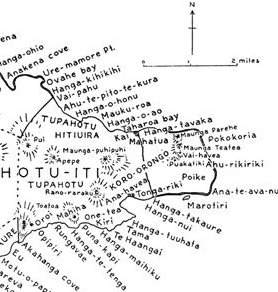1. We must finish the story about Kuukuu and the turtle:
Turning from page 28 to 29 seems to be underlined by mentioning 27 days at Oromanga. Possibly the purpose was to make us count 27 + 28 + 29 = 84 = 3 * 28 = 4 * 21 = 6 * 14 = 7 * 12. Furthermore, 84 = half 168 (the distance from Antares to Rigel):
Night number 29 in the month is a Mercury night, when Moon has disappeared. If Sun goes inside a 'cave', then of course Moon cannot be shining - she has no light of her own, she is shining from the rays of Sun when he looks at her. In her 29th night Sun is recreating Moon by going on her back (which we never can see from earth). Thus the disappeared Kuukuu belongs in night number 29. By 'planting' the Kuukuu 'fish' (ika) in a 'cave' inside mother earth he will sprout (tupu) - he tupu te poki i roto i te kopu o toona matua, 'like a fetus inside his mother's womb'. Maybe the distinction between mother earth and Moon cannot be perceived when there is no light. The crossed out words he noho i ora mae are certainly meant to be read and understood. I believe they are essential:
The 'fish' Kuukuu is going stale (mae), his life is fading away (ora mae). Oromanga is the 24th kuhane station (counted from Te Pu Mahore), and the day (Sun) has only 24 hours. On the map below we can see where Hanga Hoonu (Hanga-o-honu) is located and 4 steps further to the west we should find Oromanga. According to Barthel (in his The Eighth Island) Oromanga is the eastern part of the beach of Anakena (Anakena cove), the finest beach on the island where Hotu Matua will land:
On the other hand it is probably more relevant to connect Anakena with birth. Considering the Venus colour at the beginning and end of this oktet of kuhane stations, also the change from 'cave' to 'cove' (bedchamber), and the fact that the royal child of Hotu Matua, viz. Tuu Maheke, was born here, makes it rather clear that the 'rotting fish' Kuukuu must be followed by his opposite: ... When Hotu's canoe had reached Taharoa, the vaginal fluid (of Hotu's pregnant wife) appeared. They sailed towards Hanga Hoonu, where the mucus (kovare seems to refer to the amniotic sac in this case) appeared. They sailed on and came to Rangi Meamea, where the amniotic fluid ran out and the conctractions began. They anchored the canoe in the front part of the bay, in Hanga Rau. The canoe of Ava Rei Pua also arrived and anchoraged. After Hotu's canoe had anchoraged, the child of Vakai and Hotu appeared. It was Tuu Maheke, son of Hotu, a boy ... (Manuscript E, p. 80) |
||||||||||||||||||||||||||||||||||||||
